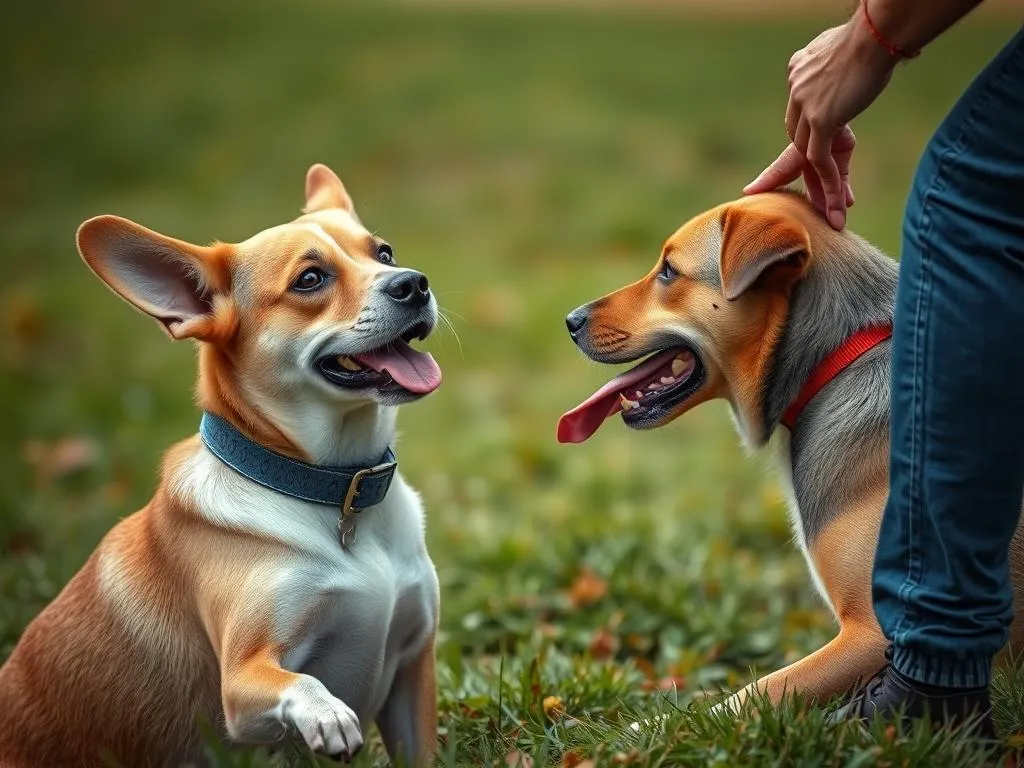
Introduction
Dog training is a crucial aspect of responsible pet ownership, fostering good behavior, communication, and a strong bond between you and your furry companion. Central to effective training are the concepts of rewards and reinforcement. While they are often used interchangeably, understanding the differences and similarities between them can enhance your training approach. This article delves into these concepts to provide you with practical guidance, helping you become a more effective trainer for your dog.
Understanding Dog Training
Definition of Dog Training
Dog training involves teaching your dog specific behaviors and commands, shaping their responses to various stimuli. It encompasses everything from basic obedience commands to complex tricks and behavioral modification. Training is essential not only for teaching commands but also for ensuring your dog behaves appropriately in different situations, thereby enhancing their safety and your peace of mind.
Goals of Dog Training
The primary goals of dog training include:
- Behavioral correction: Addressing undesirable behaviors, such as jumping on guests or excessive barking.
- Establishing communication: Facilitating a clear line of communication between you and your dog, allowing for better understanding and cooperation.
- Building a strong bond: Strengthening the emotional connection between you and your dog through positive interactions.
Key Concepts in Dog Training
What is Reinforcement?
In behavioral psychology, reinforcement refers to any consequence that strengthens a behavior, making it more likely to occur again in the future. Reinforcement can be broadly categorized into two types:
- Positive reinforcement: Involves adding a pleasant stimulus to encourage a behavior (e.g., giving a treat when the dog sits).
- Negative reinforcement: Involves removing an unpleasant stimulus to encourage a behavior (e.g., stopping a loud noise when the dog lies down).
What is a Reward?
A reward in dog training is a specific consequence that is given to a dog following a desired behavior. Rewards can take many forms, including treats, praise, toys, or playtime. The key distinction between a reward and reinforcement is that while all rewards can serve as reinforcement, not all reinforcement is a reward. For example, removing a leash pressure when a dog stops pulling is negative reinforcement but not a reward.
The Relationship Between Rewards and Reinforcement
Rewards can serve as a form of reinforcement. When you reward your dog for good behavior, you are reinforcing that behavior, making it more likely to occur in the future. For instance, if you give your dog a treat for sitting, the treat serves as both a reward and a positive reinforcement of the sitting behavior. This overlap can sometimes create confusion, but understanding this relationship is key to effective training.
Types of Reinforcement in Dog Training
Positive Reinforcement
Positive reinforcement is one of the most effective training methods. It involves providing a reward immediately after the desired behavior occurs. Examples of positive reinforcement include:
- Giving a treat when your dog sits on command.
- Offering praise and petting when your dog comes to you.
- Playing with a favorite toy after your dog performs a trick.
The benefits of positive reinforcement include increased motivation, enhanced learning, and a more enjoyable training experience for both you and your dog.
Negative Reinforcement
Negative reinforcement can be a bit more controversial in dog training. It involves the removal of an unpleasant stimulus following a desired behavior. For example, if your dog is wearing a harness that pulls when it moves forward, and you release the tension when the dog walks calmly, you are using negative reinforcement.
While negative reinforcement can be effective, it should be used cautiously. Potential drawbacks include the risk of causing anxiety or fear in your dog, which can lead to behavioral issues in the long run.
Punishment as a Training Tool
Punishment in dog training refers to introducing an unpleasant consequence to decrease a behavior. There are two main types:
- Positive punishment: Adding an unpleasant stimulus (e.g., a loud noise) when a behavior occurs (e.g., barking).
- Negative punishment: Removing a pleasant stimulus (e.g., withholding attention) when a behavior occurs (e.g., jumping).
Ethical considerations arise when using punishment. Many trainers advocate for positive reinforcement over punishment, as it fosters a more trusting and positive relationship between you and your dog. Misuse of punishment can lead to fear, aggression, and anxiety in dogs, making it counterproductive.
The Role of Rewards in Dog Training
Different Types of Rewards
Rewards can take various forms, and understanding these can enhance your training effectiveness:
- Food rewards: Treats are often the most effective form of reward, particularly for food-motivated dogs.
- Praise and affection: Verbal praise, petting, or a gentle scratch behind the ears can make your dog feel valued and loved.
- Toys and playtime: Some dogs are motivated by play. A game of fetch or tug-of-war can serve as an excellent reward.
Timing and Delivery of Rewards
The timing of rewards is critical to successful training. Delivering a reward promptly after the desired behavior reinforces the connection between the action and the consequence. Techniques for effective reward timing include:
- Immediate reinforcement: As soon as your dog performs the desired action, provide the reward.
- Marker training: Use a clicker or a verbal marker (like “yes!”) to indicate the exact moment the desired behavior occurs, followed by the reward.
Common Mistakes with Rewards
While rewards are powerful tools in dog training, some common mistakes can undermine their effectiveness:
- Over-reliance on food rewards: While treats can be effective, relying solely on them can lead to weight issues or behavior problems. Vary your rewards to maintain interest.
- Inconsistent reward schedules: Inconsistency can confuse your dog. Ensure that you reward the desired behavior consistently.
- Misreading the dog’s motivations: Not all dogs are food-driven. Pay attention to what your dog values and adjust your rewards accordingly.
Effective Training Techniques
Setting Clear Training Goals
Having specific, measurable training goals is essential. Clear goals help you track progress and keep training sessions focused. Examples of training goals might include:
- Teaching the command “sit.”
- Training your dog to stay in one place until released.
- Getting your dog to come when called.
Creating a Training Plan
A structured training plan can make your sessions more productive. Incorporate various rewards and reinforcement methods in your plan. Outline specific goals, techniques, and timelines for achieving each objective.
Tips for Successful Training Sessions
To maximize the effectiveness of your training sessions, consider these tips:
- Length and frequency: Keep sessions short (5-15 minutes) to maintain your dog’s focus and prevent fatigue.
- Make it fun: Incorporate games and variety to keep your dog engaged and excited about training.
- Monitor body language: Pay attention to your dog’s cues. If they seem stressed or uninterested, it may be time to take a break or change tactics.
The Science Behind Rewards and Reinforcement
Behavioral Psychology Principles
Understanding the principles of operant conditioning can enhance your training approach. Operant conditioning is the process by which behaviors are learned based on the consequences that follow them. Dogs learn to associate specific behaviors with rewards or punishments, shaping their future actions.
Research Studies
Numerous studies have explored the effectiveness of different training methods. Research consistently shows that dogs trained using positive reinforcement tend to exhibit fewer behavioral issues and develop stronger bonds with their owners. These findings encourage dog owners and trainers to prioritize rewards over punitive measures.
Real-Life Applications and Case Studies
Successful Training Stories
Many dog owners have successfully trained their dogs using a combination of rewards and reinforcement. For instance, a rescue dog that initially displayed fear-based aggression learned to trust its owner through consistent positive reinforcement, such as treats and praise when calm around other dogs. This example illustrates the transformative power of understanding and applying these concepts in real-world situations.
Common Challenges and Solutions
Training challenges are common and can often be addressed with the right approach. For instance, if your dog barks excessively, consider using a combination of positive reinforcement for quiet behavior and gradual desensitization to the triggers causing the barking. Consistent practice and a clear plan can lead to significant improvements.
Conclusion
Understanding the differences and similarities between rewards and reinforcement is essential for effective dog training. By utilizing these concepts thoughtfully, you can foster good behavior, enhance communication, and build a strong bond with your dog. The key is to create a positive training experience that encourages learning and growth, ultimately leading to a happy and well-adjusted canine companion.
As you embark on your dog training journey, remember that every dog is unique. Tailor your approach to fit your dog’s individual needs and motivations, and you’ll see the benefits of a well-trained pet in no time. Happy training!









